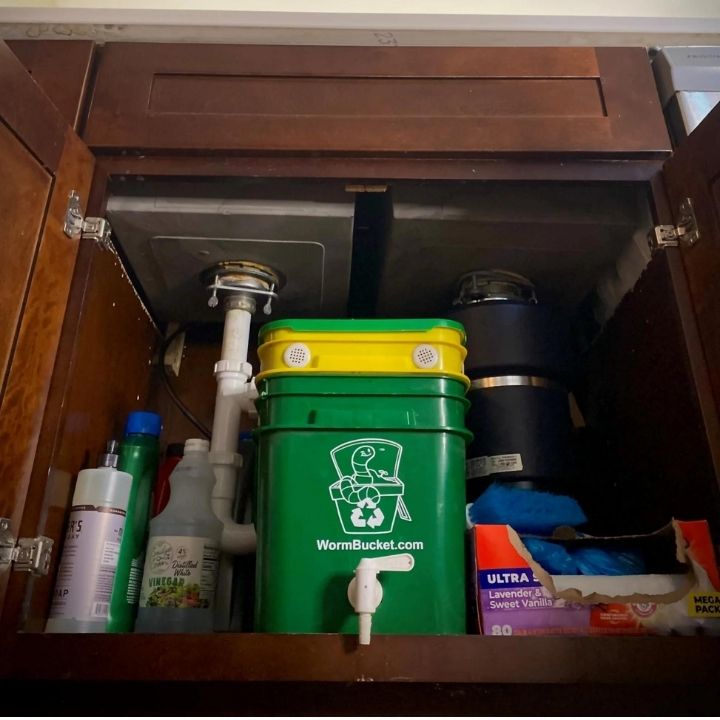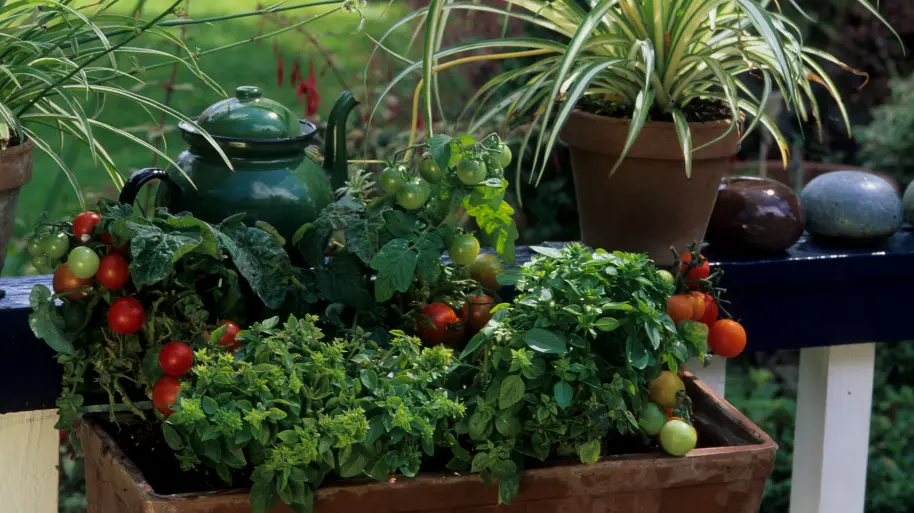I’ve always believed that you don’t need a sprawling backyard to enjoy the joys of gardening. In fact, some of the most rewarding gardens I’ve tended have been in the tiniest of spaces. Whether you’re in a city apartment or just looking to make the most of a small yard, sustainable gardening in compact areas is not only possible but can make a significant impact on your well-being and the environment.
The Rise of Small Space Gardening
With urban living on the rise, more of us are finding ourselves in smaller homes with limited outdoor areas. But guess what? That’s no reason to hang up your gardening gloves. In recent years, there’s been a surge in innovative gardening techniques tailored for small spaces, and they’re changing the game for urban gardeners like us.
According to the National Gardening Association, urban gardening has increased by 29% from 2010 to 2023. This growth is driven by a desire for fresh produce, a connection to nature, and a commitment to sustainability.
- 2010: 20 million urban gardeners
- 2023: 25.8 million urban gardeners
This trend isn’t just about growing plants; it’s about cultivating healthier lifestyles and communities. Small space gardening empowers individuals to contribute to environmental conservation, even in the heart of the city.
Choosing the Right Plants for Small Spaces
Selecting the right plants is crucial when space is at a premium. I often opt for plants that are compact, versatile, and have multiple uses. Here’s a detailed look at some top choices:
Herbs
- Basil: Great for pest control and adds fresh flavor to dishes. It thrives in pots and requires minimal space.
- Rosemary: Drought-tolerant and aromatic, rosemary can be pruned into shapes, adding aesthetic value.
- Mint: Be cautious—mint spreads rapidly, so keep it confined to its own pot. It’s excellent for teas and desserts.
Vertical Climbers
- Peas: Early to mature and can be harvested multiple times. Peas fix nitrogen in the soil, benefiting neighboring plants.
- Beans: Pole beans grow upwards and produce abundant yields. They’re also rich in protein.
- Cucumbers: With the right support, cucumbers climb easily and save ground space. Choose compact varieties like ‘Patio Snacker’.
Dwarf Varieties
Recent breakthroughs in horticulture have led to dwarf fruit trees that can thrive in pots.
- Dwarf Apple Trees: Varieties like ‘Garden Delicious’ produce full-sized apples on compact trees.
- Dwarf Citrus Trees: Meyer lemons and Calamondin oranges are perfect for container growth and can be brought indoors during winter.
- Dwarf Cherry Trees: ‘Stella’ cherries are self-pollinating and yield fruit even in limited spaces.

These dwarf varieties are a game-changer. They not only save space but also start producing fruit sooner than standard trees. Plus, they add a delightful ambiance to patios and balconies.
Vertical Gardening Techniques
When I first discovered vertical gardening, it felt like unlocking a new level in a game. Suddenly, walls and fences became canvases for greenery. Here are some methods to maximize your vertical space:
Living Walls
Living walls, or green walls, are panels of plants grown vertically using hydroponics or soil-based systems.
- Benefits:
- Aesthetics: Transforms bare walls into vibrant, living art pieces.
- Air Quality: Plants filter pollutants, improving indoor and outdoor air.
- Insulation: Helps regulate building temperatures, reducing energy costs.
How to Create a Living Wall:
- Choose a Location: Select a wall that receives adequate sunlight.
- Install a Frame: Use a sturdy material like metal or wood.
- Add a Waterproof Layer: Protect the wall from moisture.
- Set Up Planters or Pockets: Felt pockets or modular trays work well.
- Select Suitable Plants: Opt for plants with similar water and light needs.
- Implement Irrigation: Drip irrigation systems ensure even watering.
Stacked Planters
Stacked planters are multi-tiered systems that allow you to grow several plants vertically.
- Ideal For:
- Herbs: Parsley, cilantro, and thyme.
- Leafy Greens: Lettuce, spinach, arugula.
- Strawberries: Perfect for cascading over the edges.
Advantages:
- Space Optimization: Grow more plants in less ground area.
- Ease of Maintenance: Accessible for watering and harvesting.
- Mobility: Many designs are lightweight and portable.
Hanging Pots
Hanging pots and baskets utilize overhead space.
- Best Plants:
- Flowers: Petunias, fuchsias, and begonias add color.
- Vegetables: Cherry tomatoes and peppers.
- Herbs: Trailing varieties like oregano and thyme.
- Tips for Success:
- Secure Fixtures: Ensure hooks and brackets are sturdy.
- Lightweight Materials: Use coco coir liners or plastic pots to reduce weight.
- Regular Watering: Hanging plants dry out faster, so monitor moisture levels.
Table: Comparison of Vertical Gardening Systems
| System | Cost | Difficulty | Best For | Maintenance |
|---|---|---|---|---|
| Living Walls | $$$ | High | Aesthetics, Air Purification | High |
| Stacked Planters | $ | Low | Herbs, Leafy Greens | Low |
| Hanging Pots | $$ | Medium | Flowers, Trailing Plants | Medium |
The future of vertical gardening is exciting. Innovations like modular living wall systems and automated irrigation are making it easier for anyone to create a vertical garden.
Sustainable Practices in Small Gardens
Sustainability is at the heart of gardening, no matter the size of your plot. Here are some practices I’ve adopted to make my small garden eco-friendly.
Composting in Tight Spaces
You might think composting requires a big yard, but countertop composters and worm bins are perfect for small spaces.
- Vermicomposting:
- How It Works: Red worms consume organic waste, producing nutrient-rich castings.
- Setup: A small bin with bedding material (like shredded newspaper) and ventilation holes.
- Maintenance: Feed the worms kitchen scraps (avoid meat and dairy) and keep the bedding moist.

Bokashi Composting:
- Process: Uses beneficial microbes to ferment organic waste anaerobically.
- Advantages: Handles a wider range of waste, including meat and dairy.
- Usage: The fermented material can be buried in soil, where it breaks down further.
Water Conservation Techniques
Water is precious, and conserving it is essential.
- Self-Watering Planters:
- Design: Feature a water reservoir that supplies moisture to the soil.
- Benefits: Reduces frequency of watering and prevents overwatering.
- DIY Option: Convert regular pots by adding a wicking system.
- Rainwater Harvesting:
- Methods:
- Rain Chains: Direct water from gutters into containers.
- Barrels: Collect runoff from roofs or balconies.
- Usage: Ideal for watering plants during dry spells.
- Methods:
- Drip Irrigation Systems:
- Efficiency: Delivers water directly to plant roots, minimizing evaporation.
- Automation: Can be connected to timers for consistent watering schedules.
Organic Pest Control
Maintaining a healthy garden means keeping pests at bay without harmful chemicals.
- Companion Planting:
- Examples:
- Marigolds: Repel nematodes and whiteflies.
- Basil with Tomatoes: Improves flavor and deters pests.
- Benefits: Enhances biodiversity and plant health.
- Examples:
- Natural Predators:
- Ladybugs and Lacewings: Feed on aphids and mites.
- Attracting Predators: Planting flowers like dill and yarrow can invite beneficial insects.
- Homemade Remedies:
- Garlic Spray: Deters insects with its strong smell.
- Neem Oil: Controls a variety of pests and is safe for beneficial insects when used properly.
Container Gardening Tips
Containers are a small-space gardener’s best friend. Here’s what I’ve learned:
Choosing the Right Container
- Materials:
- Terracotta: Porous and allows for airflow but can dry out quickly.
- Plastic: Retains moisture longer; choose BPA-free options.
- Fabric Pots: Lightweight, breathable, and promote healthy root systems.
- Size Considerations:
- Root Depth: Deeper containers for root vegetables like carrots and radishes.
- Growth Habit: Bush varieties need more width, while climbing plants require support.
Soil and Drainage
- Soil Mix:
- Components: A mix of peat moss or coconut coir, compost, and perlite.
- Benefits: Ensures good drainage and aeration while retaining moisture.
- Drainage Solutions:
- Drainage Holes: Essential to prevent waterlogging.
- Layering: Add gravel or broken pottery at the bottom (though some experts suggest this doesn’t improve drainage significantly).
Fertilizing
- Organic Options:
- Compost Tea: Steep compost in water to create a nutrient-rich liquid.
- Fish Emulsion: Provides nitrogen for leafy growth.
- Seaweed Extract: Supplies trace minerals.
- Application Tips:
- Frequency: Containers may need fertilizing every 2-4 weeks.
- Signs of Nutrient Deficiency: Yellowing leaves, stunted growth, and poor yields.
Community Gardening and Shared Spaces
If your own space is limited, consider joining a community garden. These shared spaces not only provide room to grow but also foster community connections.
Benefits of Community Gardens:
- Access to Land: Grow larger plants or experiment with different crops.
- Social Interaction: Meet like-minded individuals and share experiences.
- Educational Opportunities: Many gardens offer workshops on sustainable practices.
How to Get Involved:
- Research: Look for local community gardens through city websites or gardening organizations.
- Visit: Tour the garden to understand the rules and community culture.
- Participate: Volunteer for communal tasks to contribute to the garden’s success.
I joined a local community garden last year, and it’s been transformative. Sharing tips, seeds, and harvests with neighbors has enriched my gardening experience beyond measure.
Future Trends in Small Space Gardening
Technology is weaving its way into gardening, offering solutions that were unimaginable a decade ago.
Smart Gardens
Devices like smart planters can monitor soil moisture, light, and even dispense water and nutrients as needed.
- Examples:
- Click and Grow Smart Garden: Automated lighting and watering for indoor herbs and veggies.
- Edyn Garden Sensor: Tracks environmental conditions and offers plant care advice via a mobile app.
- Benefits:
- Convenience: Ideal for busy individuals or those new to gardening.
- Optimization: Adjusts care based on real-time data for healthier plants.
Hydroponics and Aquaponics
These soil-less systems allow for growing plants using mineral nutrient solutions in water.
- Hydroponics:
- Systems: Nutrient Film Technique (NFT), Deep Water Culture (DWC), and Aeroponics.
- Advantages: Uses up to 90% less water than traditional gardening, faster growth rates.
- Aquaponics:
- Integration: Combines aquaculture (raising fish) with hydroponics.
- Cycle: Fish produce waste that becomes nutrients for plants; plants filter the water for fish.
- Benefits: Closed-loop system that’s sustainable and efficient.

Urban Farming Innovations
- Microgreens and Sprouts:
- Growth Time: Ready to harvest in 1-2 weeks.
- Nutritional Value: Contain higher nutrient levels than mature plants.
- Space Required: Can be grown on a windowsill or countertop.
- LED Grow Lights:
- Technology: Full-spectrum lights mimic sunlight.
- Application: Enables indoor gardening year-round.
- Energy Efficiency: LEDs consume less power and have a longer lifespan.
Making a Big Impact with Your Tiny Garden
Every plant you grow contributes to a healthier environment. Small gardens can:
- Improve Air Quality: Plants absorb carbon dioxide and release oxygen, filtering pollutants.
- Support Biodiversity: Even a few native flowers can attract pollinators and beneficial insects.
- Reduce Food Miles: Growing your own produce cuts down on the environmental cost of transporting food.
- Encourage Sustainable Living: Inspires others in your community to adopt eco-friendly practices.
Real-World Examples
- Rooftop Gardens: Cities like New York and Chicago are turning rooftops into green spaces, reducing urban heat islands.
- Window Farms: Vertical hydroponic systems designed for urban windows, allowing year-round cultivation.
- Community Initiatives: Programs like “Adopt a Tree” encourage urban dwellers to plant and care for trees in their neighborhoods.
Conclusion
Gardening in small spaces is all about creativity and making the most of what you have. The satisfaction of harvesting your own tomatoes from a balcony or picking fresh herbs from your kitchen window is unmatched. Plus, you’re contributing to a more sustainable world.
So, let’s roll up our sleeves and get planting. Whether it’s a single pot of basil or a vertical garden of greens, every little bit helps. Together, we can make a big impact, one tiny garden at a time.
Happy gardening! Feel free to share your own small garden stories or tips in the comments below.
